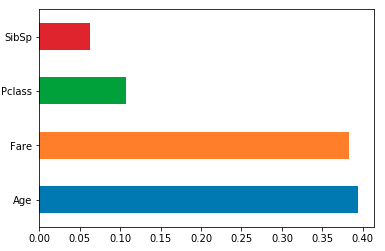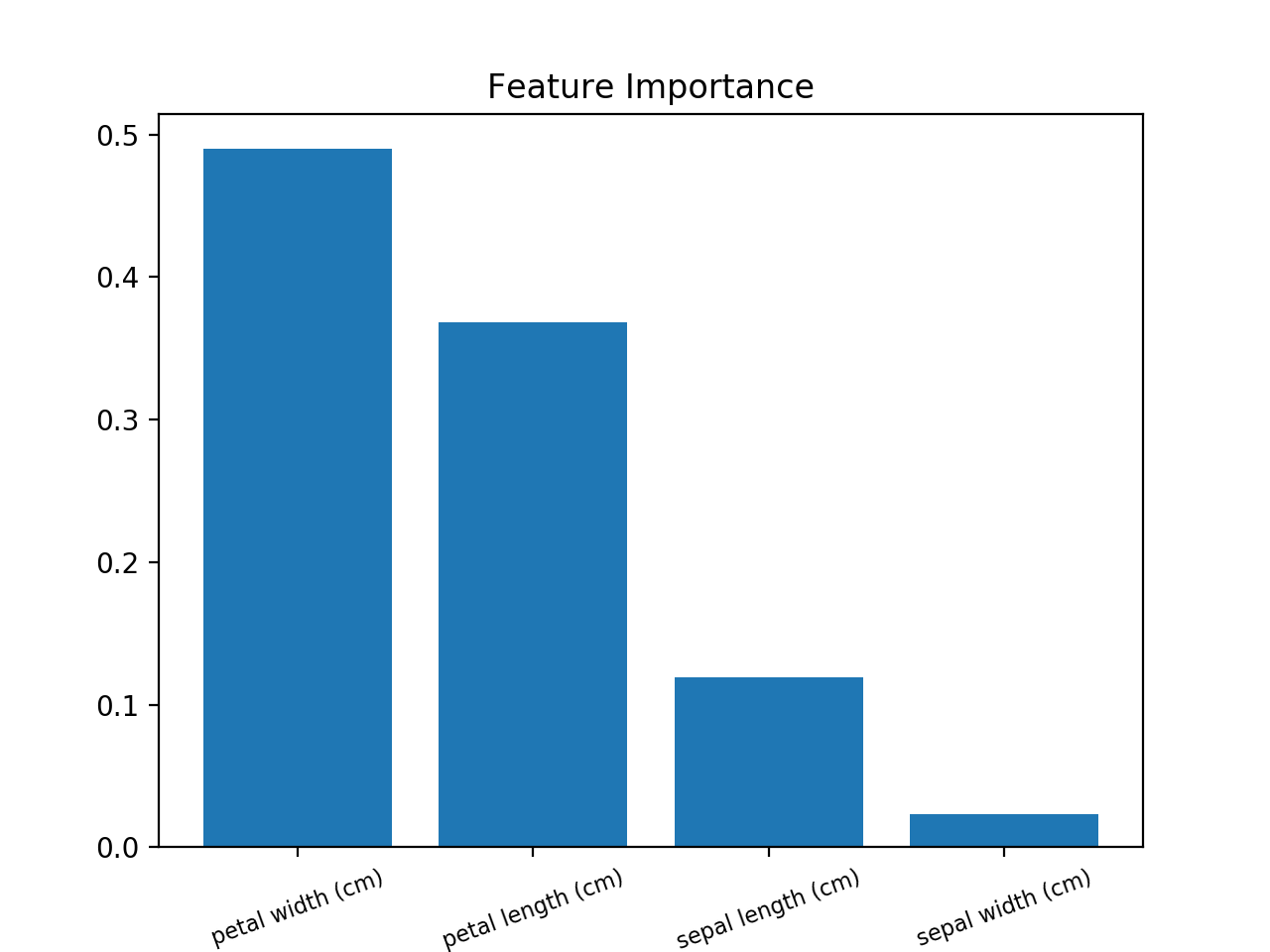Диаграмма важности случайных лесных объектов с использованием Python
Я работаю с RandomForestRegressor в python, и я хочу создать диаграмму, которая проиллюстрирует ранжирование важности функции. Это код, который я использовал:
from sklearn.ensemble import RandomForestRegressor
MT= pd.read_csv("MT_reduced.csv")
df = MT.reset_index(drop = False)
columns2 = df.columns.tolist()
# Filter the columns to remove ones we don't want.
columns2 = [c for c in columns2 if c not in["Violent_crime_rate","Change_Property_crime_rate","State","Year"]]
# Store the variable we'll be predicting on.
target = "Property_crime_rate"
# Let’s randomly split our data with 80% as the train set and 20% as the test set:
# Generate the training set. Set random_state to be able to replicate results.
train2 = df.sample(frac=0.8, random_state=1)
#exclude all obs with matching index
test2 = df.loc[~df.index.isin(train2.index)]
print(train2.shape) #need to have same number of features only difference should be obs
print(test2.shape)
# Initialize the model with some parameters.
model = RandomForestRegressor(n_estimators=100, min_samples_leaf=8, random_state=1)
#n_estimators= number of trees in forrest
#min_samples_leaf= min number of samples at each leaf
# Fit the model to the data.
model.fit(train2[columns2], train2[target])
# Make predictions.
predictions_rf = model.predict(test2[columns2])
# Compute the error.
mean_squared_error(predictions_rf, test2[target])#650.4928
Характеристика Значение
features=df.columns[[3,4,6,8,9,10]]
importances = model.feature_importances_
indices = np.argsort(importances)
plt.figure(1)
plt.title('Feature Importances')
plt.barh(range(len(indices)), importances[indices], color='b', align='center')
plt.yticks(range(len(indices)), features[indices])
plt.xlabel('Relative Importance')
этот код важности функции был изменен из примера, найденного наhttp://www.agcross.com/2015/02/random-forests-in-python-with-scikit-learn/
Я получаю следующую ошибку при попытке реплицировать код с помощью моего данные:
IndexError: index 6 is out of bounds for axis 1 with size 6
кроме того, только одна функция отображается на моей диаграмме со 100% важностью, где нет меток.
любая помощь в решении этой проблемы, чтобы я мог создать эту диаграмму, будет очень признательна.
6 ответов
вот пример использования набора данных iris.
>>> from sklearn.datasets import load_iris
>>> iris = load_iris()
>>> rnd_clf = RandomForestClassifier(n_estimators=500, n_jobs=-1, random_state=42)
>>> rnd_clf.fit(iris["data"], iris["target"])
>>> for name, importance in zip(iris["feature_names"], rnd_clf.feature_importances_):
... print(name, "=", importance)
sepal length (cm) = 0.112492250999
sepal width (cm) = 0.0231192882825
petal length (cm) = 0.441030464364
petal width (cm) = 0.423357996355
построение графика важность функции
>>> features = iris['feature_names']
>>> importances = rnd_clf.feature_importances_
>>> indices = np.argsort(importances)
>>> plt.title('Feature Importances')
>>> plt.barh(range(len(indices)), importances[indices], color='b', align='center')
>>> plt.yticks(range(len(indices)), [features[i] for i in indices])
>>> plt.xlabel('Relative Importance')
>>> plt.show()
Это можно сделать в нескольких строках, используя метод построения серии pandas. Скажем, у нас есть классификатор случайного леса sklearn model обучение с использованием фрейма данных X. Мы можем построить 4 наиболее важных функции, как это:
feat_importances = pd.Series(model.feature_importances_, index=X.columns)
feat_importances.nlargest(4).plot(kind='barh')
y-тики неверны. Чтобы исправить это, это должно быть
plt.yticks(range(len(indices)), [features[i] for i in indices])
в приведенном выше коде из spies006 "feature_names" не работал для меня. Общим решением было бы использовать name_of_the_dataframe.столбцы.
этот код от spies006 не работает:plt.yticks(range(len(indices)), features[indices]) Так что вы должны изменить его на plt.yticks(range(len(indices)),features.columns[indices])
на barplot будет более полезным для того чтобы визуализация на значение на особенности.
используйте это (пример использования набора данных Iris):
from sklearn.ensemble import RandomForestClassifier
from sklearn import datasets
import numpy as np
import matplotlib.pyplot as plt
# Load data
iris = datasets.load_iris()
X = iris.data
y = iris.target
# Create decision tree classifer object
clf = RandomForestClassifier(random_state=0, n_jobs=-1)
# Train model
model = clf.fit(X, y)
# Calculate feature importances
importances = model.feature_importances_
# Sort feature importances in descending order
indices = np.argsort(importances)[::-1]
# Rearrange feature names so they match the sorted feature importances
names = [iris.feature_names[i] for i in indices]
# Barplot: Add bars
plt.bar(range(X.shape[1]), importances[indices])
# Add feature names as x-axis labels
plt.xticks(range(X.shape[1]), names, rotation=20, fontsize = 8)
# Create plot title
plt.title("Feature Importance")
# Show plot
plt.show()



